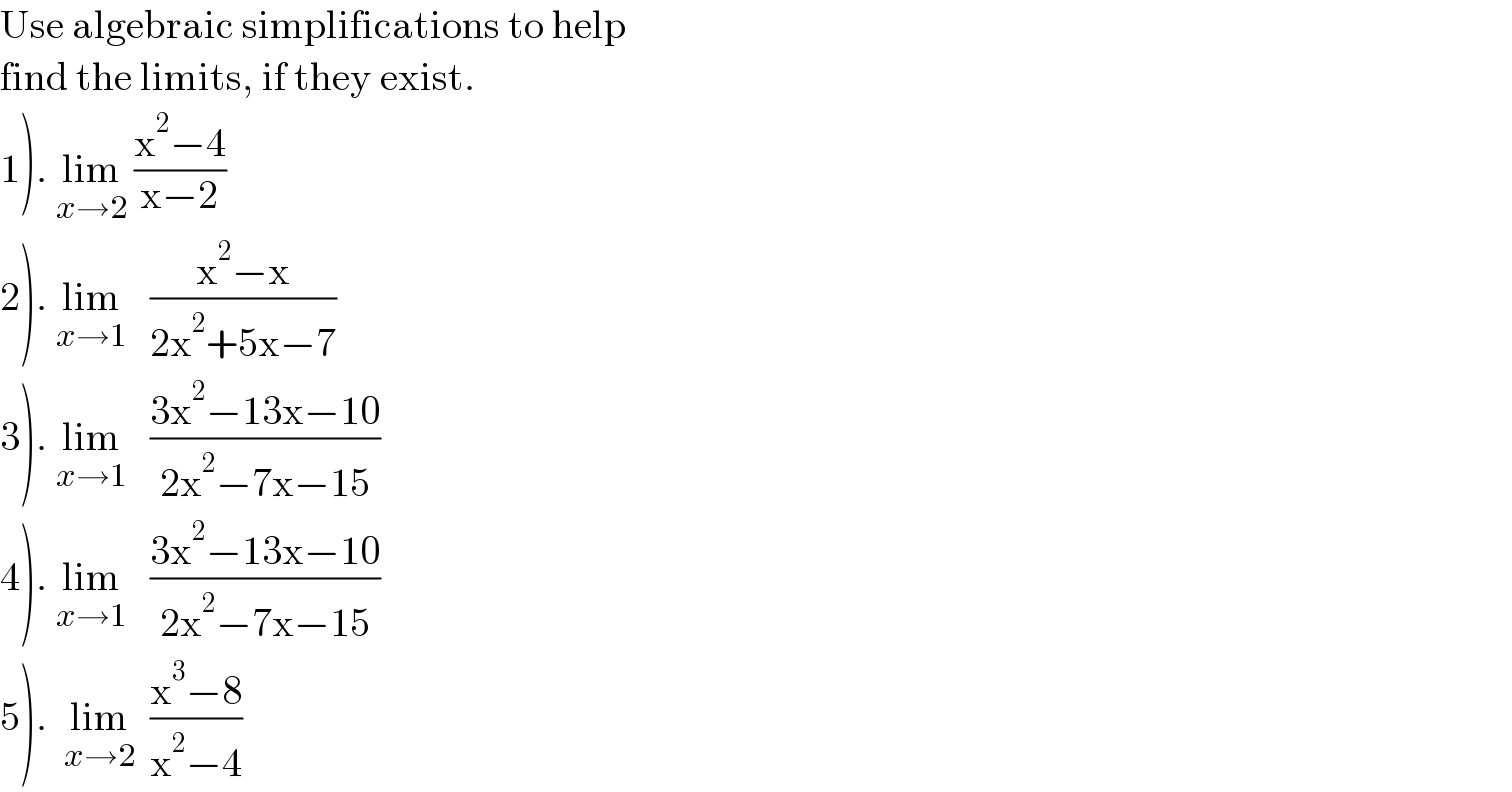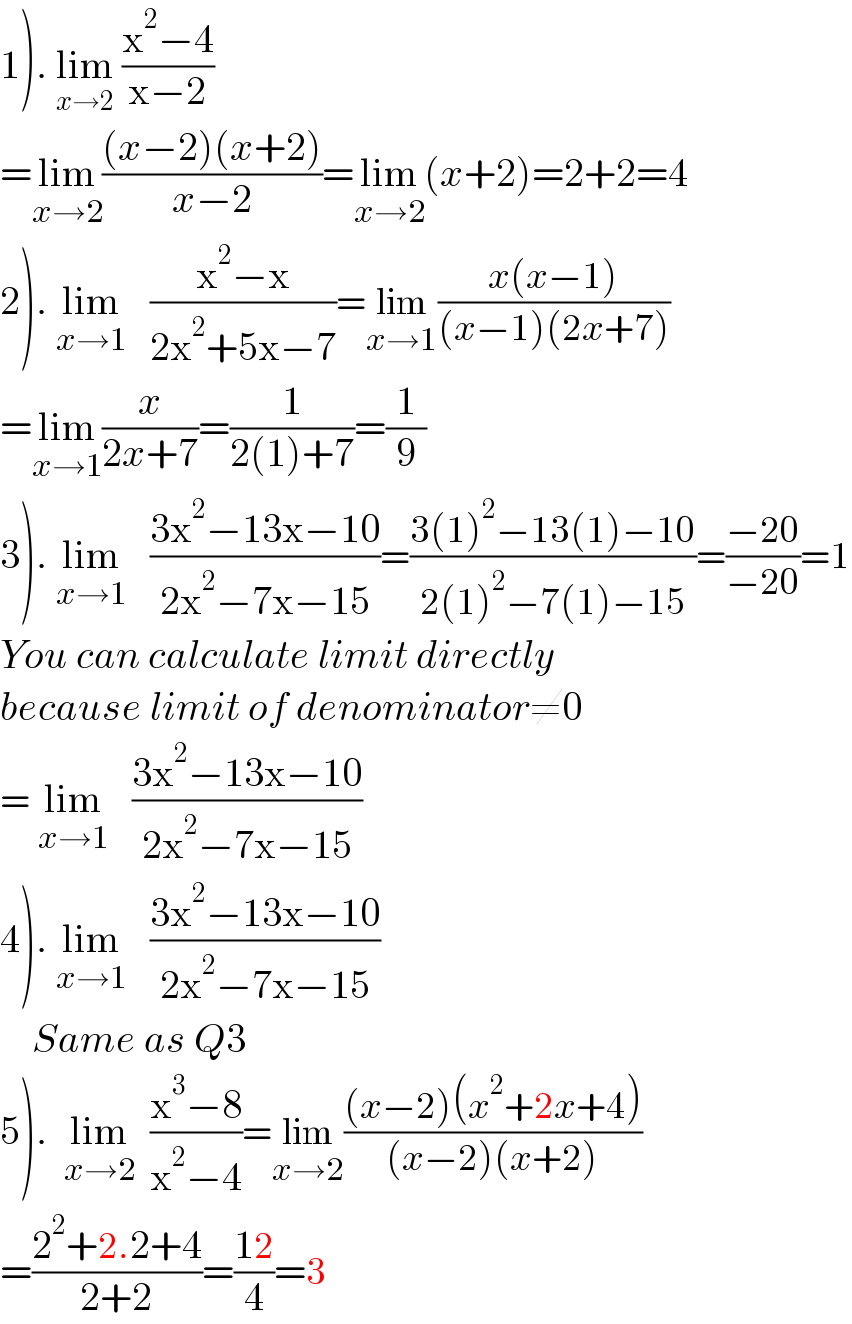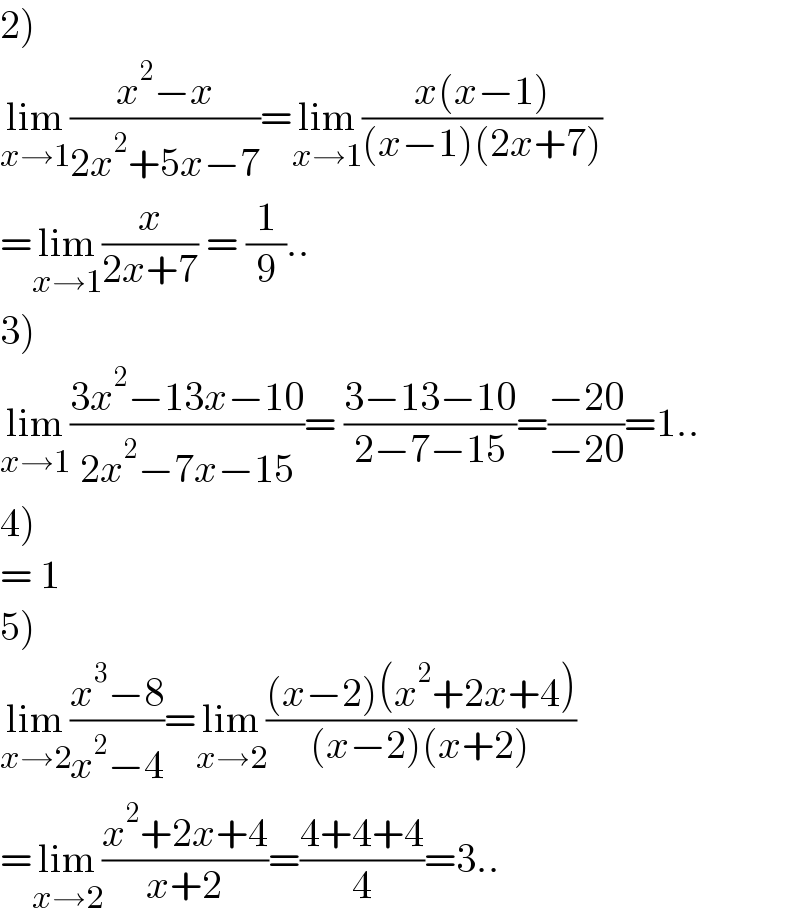
Question and Answers Forum
Question Number 155812 by zainaltanjung last updated on 05/Oct/21

Answered by Rasheed.Sindhi last updated on 05/Oct/21

Commented by zainaltanjung last updated on 05/Oct/21

Commented by Rasheed.Sindhi last updated on 05/Oct/21

Commented by zainaltanjung last updated on 05/Oct/21

Commented by puissant last updated on 05/Oct/21

Commented by Rasheed.Sindhi last updated on 05/Oct/21

Commented by puissant last updated on 05/Oct/21

Answered by puissant last updated on 05/Oct/21

Commented by zainaltanjung last updated on 05/Oct/21

